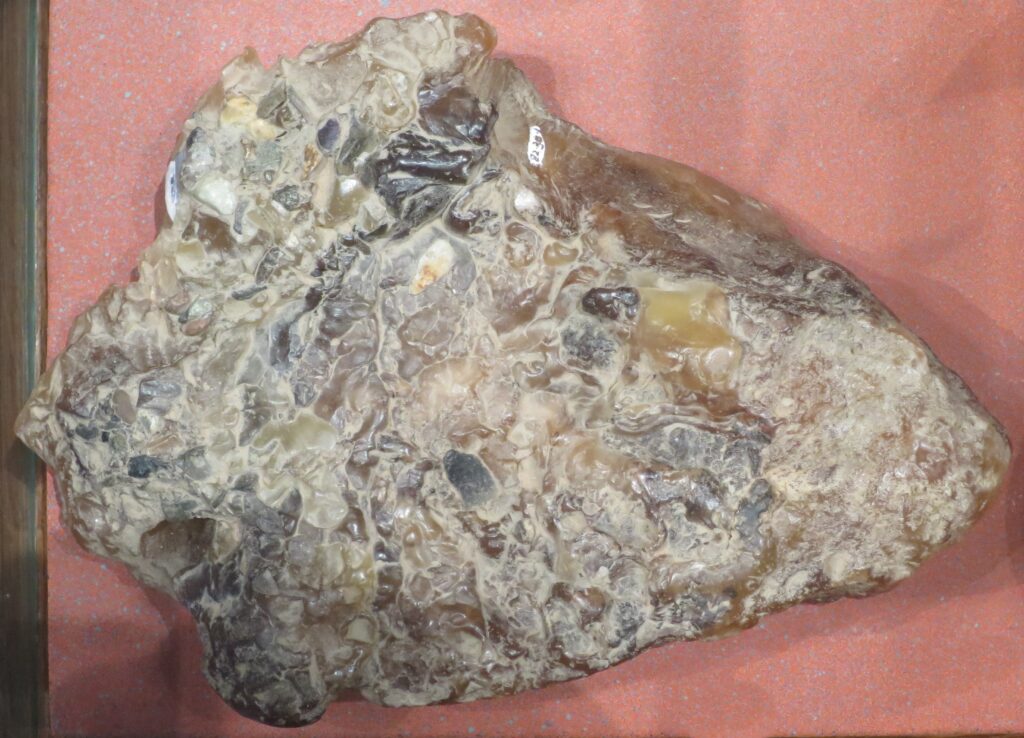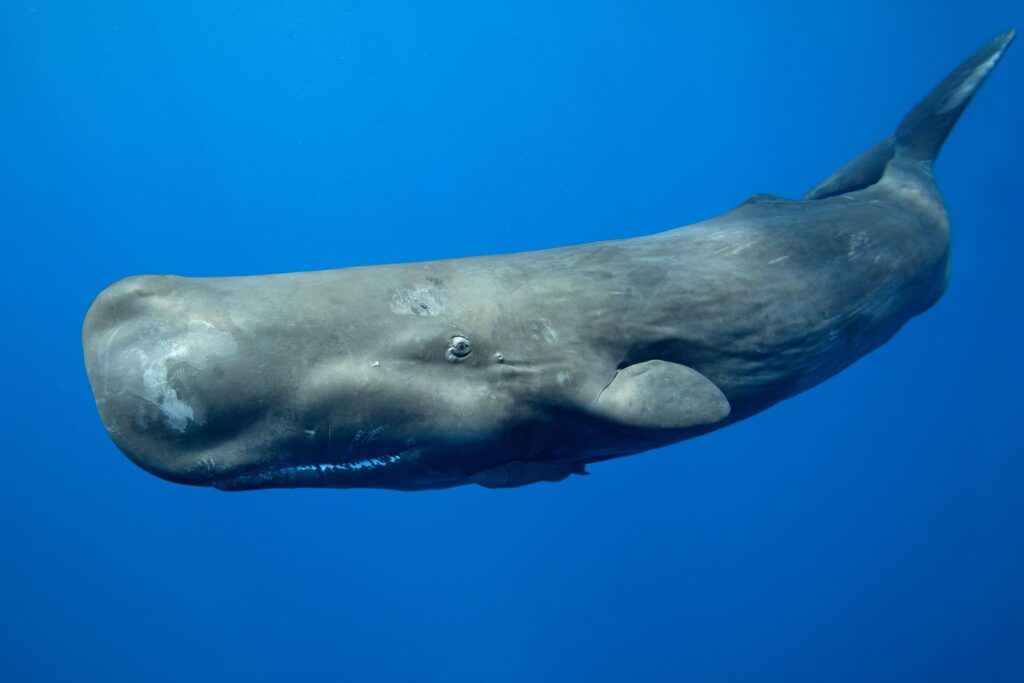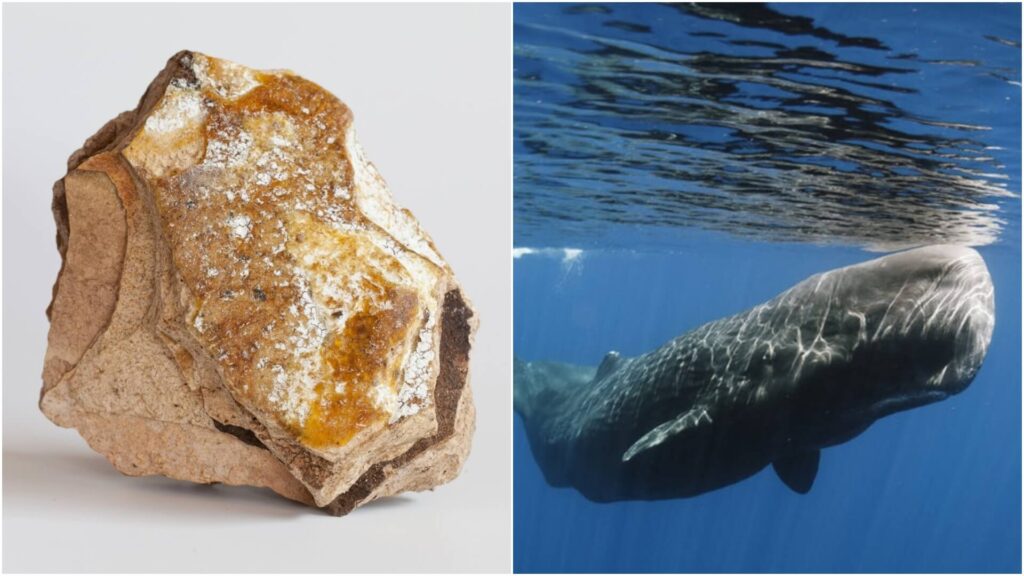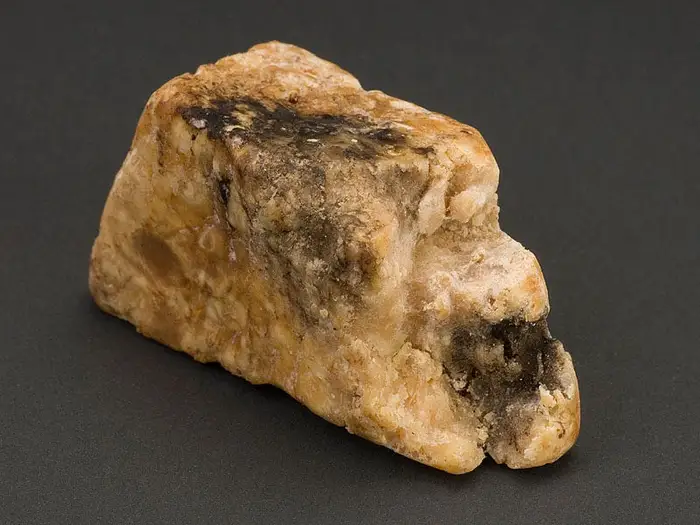What is Ambergris ?
Ambergris is a whale vomit which is fascinating substance that originates in the digestive systems of sperm whales (Physeter macrocephalus). Formed as a byproduct of the whale’s natural processes, ambergris begins its journey when the whale ingests squid or other prey with indigestible elements such as beaks. As these indigestible components irritate the whale’s digestive tract, a unique reaction occurs, resulting in the gradual formation of ambergris. Initially soft, dark, and unpleasant-smelling, this substance undergoes a transformation in the ocean, exposed to sunlight and saltwater. Over time, it hardens into a grayish, waxy material with a distinct aroma. Ambergris is remarkable not only for its physical characteristics but also for its historical use in perfumery, where its unique fragrance and fixative properties have made it a sought-after and luxurious ingredient. Despite its intriguing origins, the trade and possession of ambergris are regulated or restricted in many countries due to conservation concerns and ethical considerations related to marine mammal protection.


Physical Characteristics:
Appearance: Initially, ambergris can be soft, dark, and unpleasant-smelling. However, exposure to sunlight and saltwater in the ocean causes it to harden and take on a grayish, waxy appearance.
Texture: The texture can vary from brittle to somewhat sticky, depending on its age and environmental conditions.
Formation:
Ambergris is believed to form in the digestive tract of sperm whales as a byproduct of the whale’s attempts to expel indigestible components, such as squid beaks.
Composition:
Ambergris is a waxy, grayish substance with a unique and complex aroma. Its composition includes fatty acids, ambrein, and other compounds.
Floating:
Once expelled by the whale, ambergris may float on the ocean’s surface. It is thought that exposure to the sun and saltwater helps to transform the initially foul-smelling substance into a more pleasant fragrance.

Rare and Valuable:
Ambergris is relatively rare, and finding it washed ashore or floating in the ocean is uncommon. Because of its scarcity and unique properties, it has been highly valued for centuries.
Mystique and Lore:
Ambergris has a certain mystique and has been surrounded by folklore and myths. Its rarity and historical significance contribute to its allure.
Aromatic Qualities:
Unique Fragrance: One of the most notable features of ambergris is its complex and appealing scent. It is often described as sweet, earthy, and musky.
Perfume Fixative: Ambergris has been historically valued in the perfume industry for its ability to act as a fixative. It enhances and stabilizes the scents of perfumes, allowing the fragrance to last longer on the skin.
Harvesting and Regulation:
Natural Collection: Historically, ambergris was often collected from beaches or found floating in the ocean. This natural collection has contributed to its rarity and value.
Legal Regulations: The trade and collection of ambergris are subject to legal regulations in many countries. In some places, possession or trade of ambergris may be restricted or prohibited.
Modern Alternatives:
Synthetic Substitutes: Due to ethical concerns and the limited availability of natural ambergris, the perfume industry often uses synthetic alternatives that replicate its fixative properties.

Ambergris Trade:
The legality of ambergris trade varies by country and is subject to international regulations. In many places, the trade and possession of ambergris are either regulated or restricted, and, in some cases, it is outright illegal.
The legality of ambergris trade is influenced by factors such as conservation concerns, protection of marine species, and ethical considerations regarding the source of ambergris. The international trade of ambergris is regulated under the Convention on International Trade in Endangered Species of Wild Fauna and Flora (CITES), an international treaty designed to ensure that international trade in specimens of wild animals and plants does not threaten their survival.
Uses of Ambergris:
Perfumery:
Ambergris has been historically prized in the perfume industry for its unique and complex fragrance. It acts as a fixative, enhancing and prolonging the scent of perfumes. Its sweet, earthy, and musky aroma adds a distinctive note to high-end fragrances.
Fragrance Enhancement:
Due to its ability to enhance and harmonize scents, ambergris is used to create a rich and long-lasting olfactory experience in perfumes. It is often considered a luxurious and sophisticated addition to fragrance formulations.
Stabilizing Scents:
The waxy texture and chemical composition of ambergris help stabilize the volatile components of perfumes. This stabilizing effect contributes to the longevity and consistency of the fragrance on the skin.
A Symbol of Opulence:
Ambergris has historically been associated with luxury and opulence. Its use in perfumes by royalty and nobility has elevated its status as a symbol of sophistication and wealth.
Historical Medicinal Beliefs:
In some traditional medicine practices, there were historical beliefs that ambergris had medicinal properties, although its use in modern medicine is limited, and these claims are not scientifically supported.
Cultural Significance:
Ambergris has cultural significance in various societies. Its historical use as a coveted substance in perfumes and its rarity contribute to its allure as a cultural symbol.
Legal and Ethical Considerations:
Due to conservation concerns and ethical considerations related to marine mammal protection, the trade and possession of ambergris are regulated or restricted in many countries. In some places, it is outright illegal.
